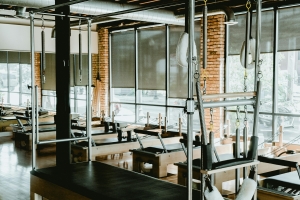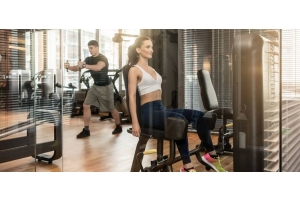resistance training
-
- November 02, 2022
Seriously thinking about working out at home? Learn how to design a home gym and layout with some simple advice. From the constraints of space and budget to the need to have a sufficient variety of equipment
-
- September 10, 2018
You may be aware of the terms ‘low impact’ and’ high impact’ but may not be aware of what they really mean. In exercise terms the word ‘impact ‘refers to the force exerted onto bones and joints.
Examples
-
- July 18, 2018
Should you use weights and if so what weights? Want to know how to do a squat and whether you should start with machines? What’s the best form? Here we explore all you need to know about squatting.
Why
-
- February 15, 2018
Increasingly popular in homes and studios, the Pilates reformer is one of those pieces of equipment most people have heard of, but few understand what benefits there could be over and above more traditional
-
- February 08, 2017
The evolution of the wooden rowing machine in the mid 1980’s by the company, WaterRower, has led to the rise of wooden fitness equipment designed for both home gyms and fitness studios. This was as a
-
- October 19, 2016
It’s a question that thousands of viewers of Netflix’s House of Cards series want to know – even now months after the latest House of Cards season four. What rower does Frank Underwood own and use? The
-
- July 19, 2016
The UK country manager for SportsArt, Roger Eldergill, says, “Self-powered bikes and steppers have been around for a long time, but it’s the advent of self-powered treadmills that’s really exciting”.
-
- September 30, 2014
One of the most popular ways to get in shape, exercise bikes are perfect for both home and commercial use. Exercise bikes offer a low impact way to strengthen your cardiovascular system, and make excellent
-
- August 18, 2014
Functional training is a method of exercising originally developed to rehabilitate people who experienced a loss of functions due to an accident, old age, disease, or excessive weight gain.
Today, however,



